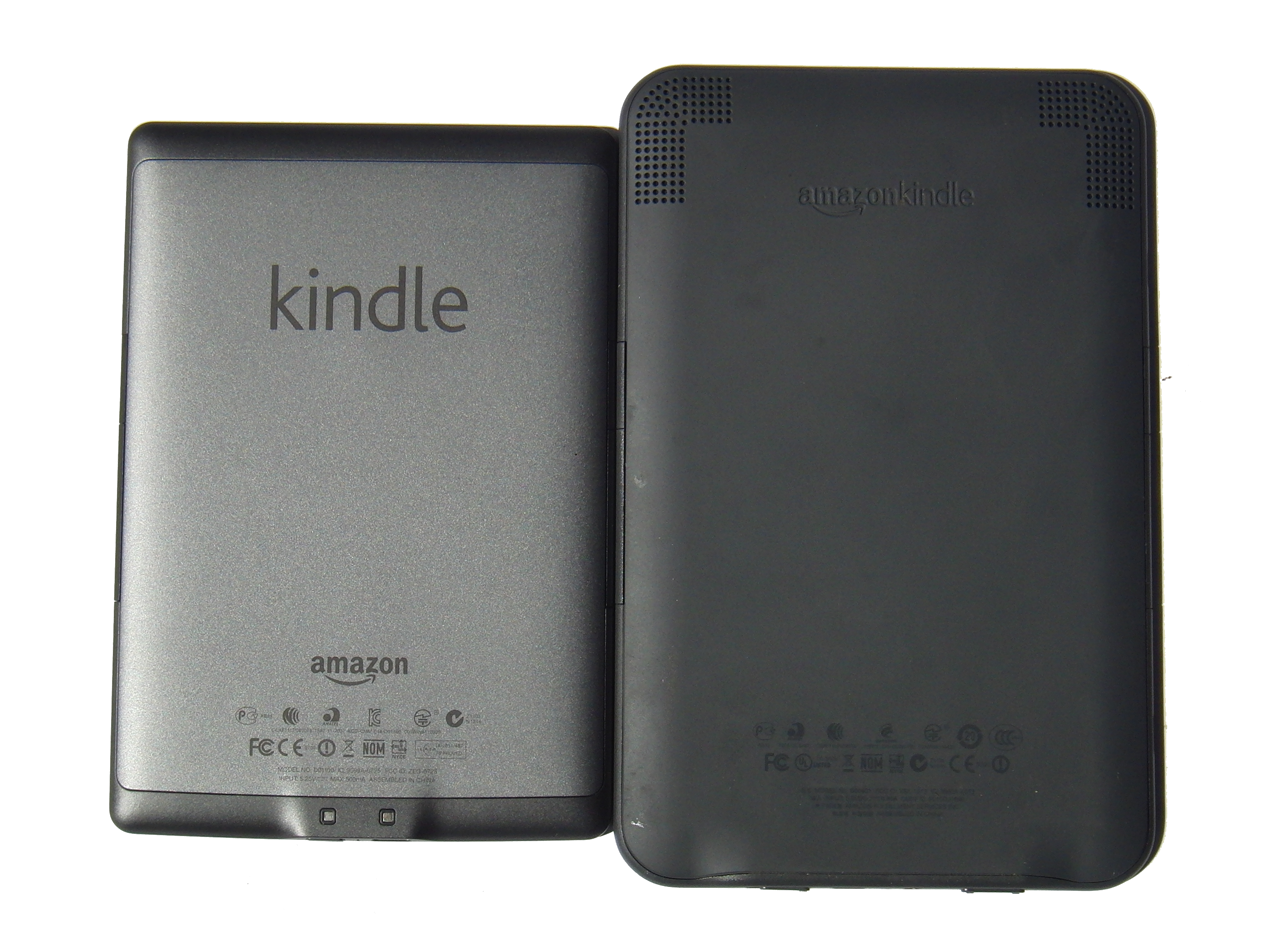Hands-On: Amazon's Fourth-Gen Kindle Refresh
Meet The Fourth-Gen Kindle
Amazon's fourth-gen Kindle hasn't received much fanfare as a result of its tablet announcement. However, the company's new eBook reader features a few changes, along with a significantly lower price tag.
It's part of a dual-pronged approach intended to dominate digital media distribution. While the Kindle Fire tablet is set to take on Apple in the tablet market, the lower-end Kindle represents Amazon's efforts to continue rocking digital book sales.
The newest Kindles come in two flavors: touchscreen and non-touchscreen. But both underwent a drastic facelift. Amazon primarily focused on aesthetics and usability in its evolution. The silver color scheme and keyboard-less design are perhaps the most noticeable changes. However, the company tells us it plans to continue selling the older third-gen black model under the name Kindle Keyboard.
| Header Cell - Column 0 | Kindle (Fourth-Gen) Wi-Fi | Kindle Touch Wi-Fi | Kindle Keyboard (Third-Gen) Wi-Fi |
|---|---|---|---|
| Display | 6" E Ink Pearl | 6" E Ink Pearl | 6" E Ink Pearl |
| Dimensions | 6.5" x 4.5" x 0.34" | 6.8" x 4.7" x 0.40 | 7.5" x 4.8" x 0.34" |
| Weight*(lab measurement) | 5.9 ounces* | 7.3 ounces* | 7.9 ounces* |
| Battery | Li-ion Polymer 890 mAh (3.7 V) | Li-ion Polymer 1420 mAh (3.7 V) | Li-ion Polymer 1750 mAh (3.7 V) |
| Text to Speech/MP3 Playback | N | Y | Y |
| User Accessible Space | 1.35 GiB | 3.21 GiB | 3.05 GiB |
| Price | $79 (special offers)$109 | $99 (special offers)$139 | $99 (special offers)$139 |
We're still waiting for our Kindle Touch to arrive, but Amazon tells us that there's very little difference between the touchscreen and non-touchscreen models, aside from the touch interface, the presence of speakers, and capacity. All of the Kindles feel the same, as they employ the same stiff ABS plastic case and rubberized plastic coating around back for scratch resistance.
Compared to the previous generation, the lack a physical keyboard makes Amazon's newest Kindles smaller and lighter. However, this changes ergonomics to a small degree.
The "next page" buttons are now embedded along a thinner beveled edge, which makes it a little harder to turn a page, since you go from pressing the surface of the Kindle to trying to squeeze the side.
The device is still connected through a micro-USB connector. Now you have to press down on the Kindle's power button to turn it on, rather than using the Kindle Keyboard's slider mechanism.
Get Tom's Hardware's best news and in-depth reviews, straight to your inbox.
Current page: Meet The Fourth-Gen Kindle
Next Page Keyboard-Less Navigation And Screen Rotation-
Nim Chimpsky "Amazon is claiming faster page turns... Overall, we don't see any change in performance." Maybe they were hoping for the placebo effect.Reply -
slicedtoad still using a 1st gen kindle. Kinda slow page turns and not the greatest contrast but it still reads better than a physical book (cause it's lighter).Reply
And e-readers shouldn't be compared to tablets, the only similarity is the physical form. e-readers allow you to read long books without straining your eyes anymore than with paper. Tablets on the other hand do a large number of things (of questionable usefulness) but reading anything more than a newspaper is hard on the eyes. -
CorusMaximus Could you guys test them against large PDF files? As a grad student that is what I would be seeing quite a bit of.Reply -
acku CorusmaximusCould you guys test them against large PDF files? As a grad student that is what I would be seeing quite a bit of.You mean a page speed test with large PDFs?Sure, we can do that. Check back tomorrow.Reply
Cheers,
Andrew Ku
TomsHardware.com -
Saulot To the extent that I am interested in an e-reader, it is because I don't want to do my reading on an LCD. However, it is disappointing that Amazon seems to have cheapened the display quality on this model. Probably won't be a buy for me.Reply -
interfan7 Well if Amazon claims in advertisements that it is the same 6" e-ink screen and we find out it is not, it damages Amazons' reputation in my opinion. Personaly I'm starting to feel disappointed and won't buy it.Reply
If TomsHardware is correct clients should know about it.
If the touch versions cames with a screen in the same quality like the 3rd generation, then there is a chance I will buy it.
They should have added $10-$15 for a unit and use a good panel. -
tipoo 20 more dollars for much easier typing/navigation and double the battery capacity. I'm not seeing the appeal in the lowest end one, the Touch seems to be the way to go.Reply -
As a matter of argument the K3 refreshes EVERY page turn whereas the K4 comes defaulted to refresh after a few page turns. That can make a big difference between displayed screens even on the same K4. To test it where it is apples to apples, you need to install FW 4.0.1 on the K4 and set the page refresh to EVERY page. Otherwise your tests are skewed and totally meaningless.Reply
-
dark_knight33 Videos on the last page are kinda lame quality, particularly the ipad input lag. I'm not even sure what I'm supposed to be looking at there.Reply
As a Kin 3rd gen owner, I'm happy that my device is still superior, and don't feel a bit bad about the extra money spent on it. I don't know what the sweet spot price is they are trying to achieve, but $100 seems like more than a bargain for an e-reader. People that want to spend less money than that for a "book replacement", probably don't buy many books anyway. ;-)



